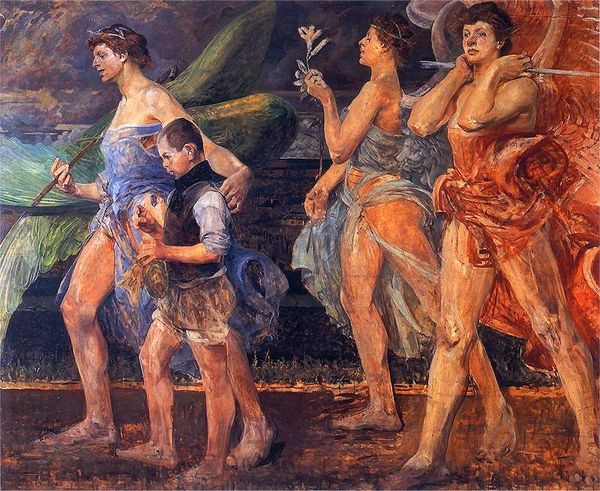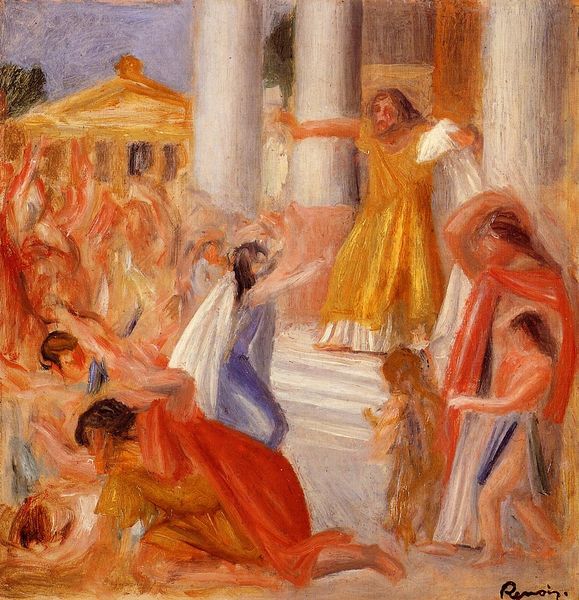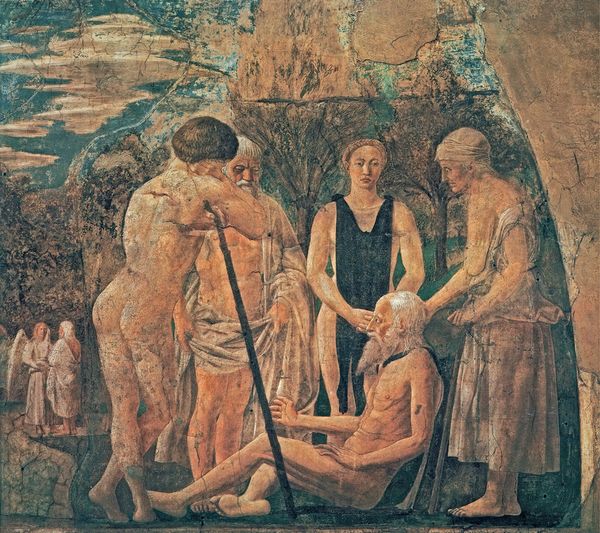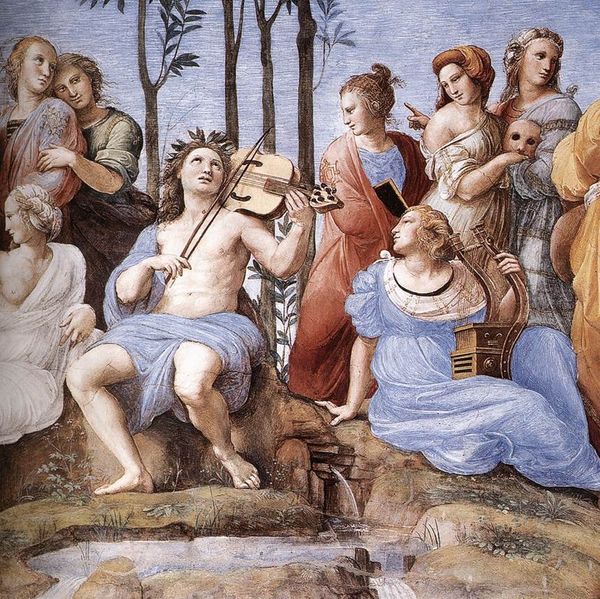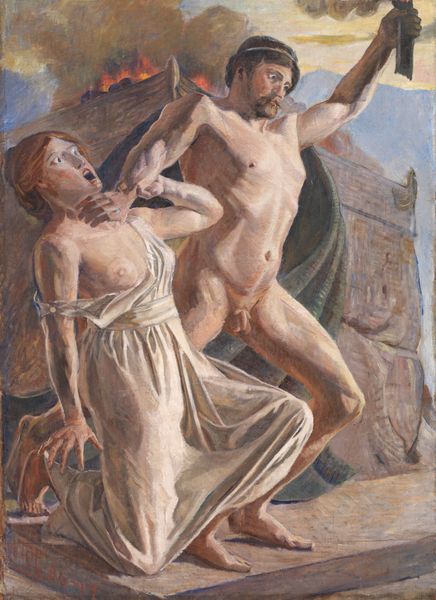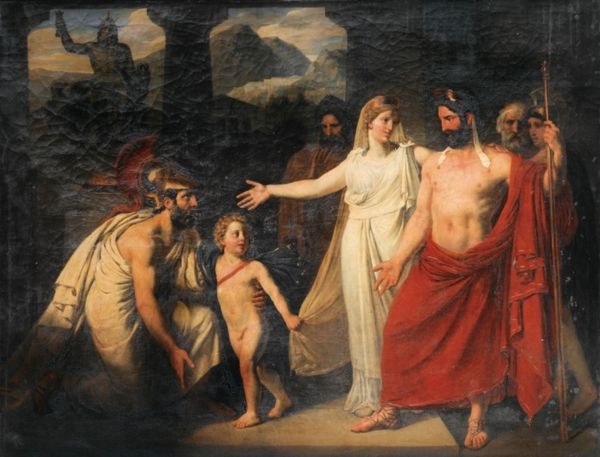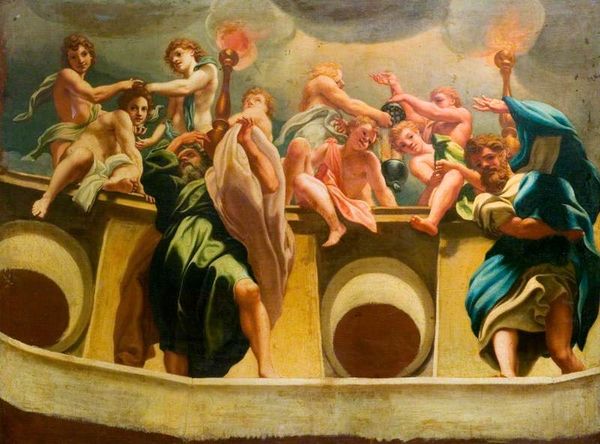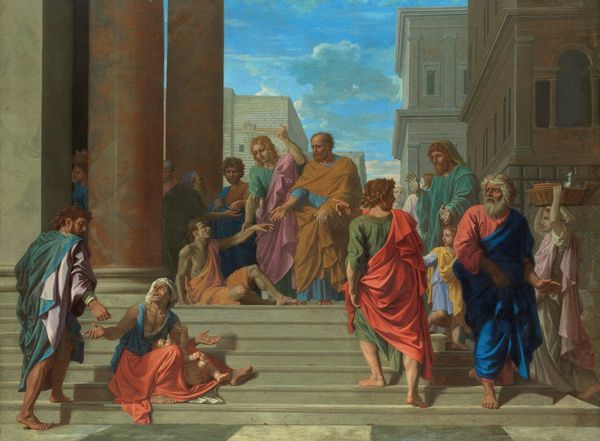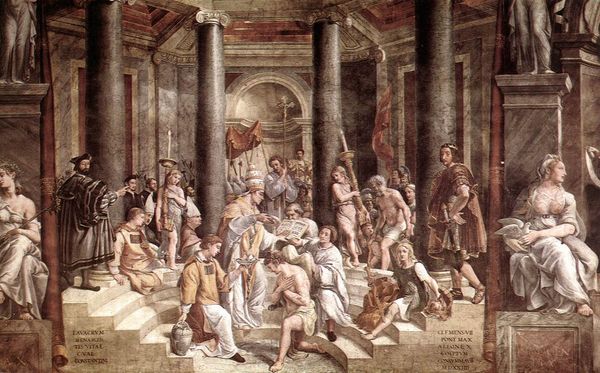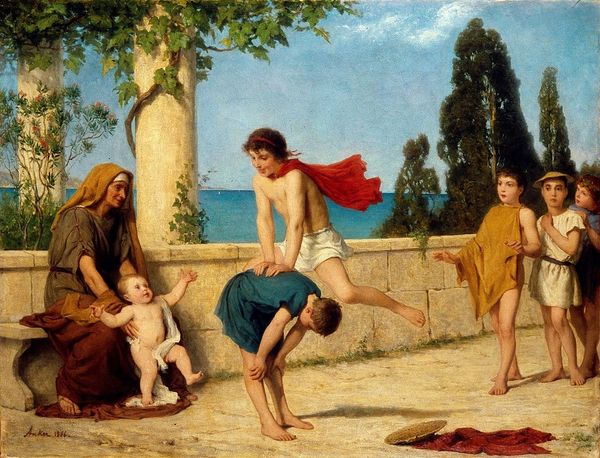
panel, oil-paint
#
gouache
#
panel
#
oil-paint
#
landscape
#
perspective
#
soviet-nonconformist-art
#
painted
#
figuration
#
social-realism
#
oil painting
#
history-painting
#
realism
Copyright: Public domain
Editor: This is "Earthquake in the Crimea" by Kuzma Petrov-Vodkin, painted in 1928 using oil paint and gouache on a panel. The palette feels muted, almost drained, and there’s a tangible sense of unease in the figures’ postures. What's your take on this piece? Curator: The apparent stillness of the composition, ironically, speaks volumes about the underlying anxieties prevalent in Soviet society at that time. Petrov-Vodkin's social realism transcends mere representation. The earthquake isn't just a natural disaster; it’s a metaphor. Editor: A metaphor for what, exactly? The anxieties of Soviet Society? Curator: Yes. Think about the socio-political context: the forced collectivization, the suppression of dissent. The tremors experienced in the Crimea mirror the instability felt by many under Stalin's regime. Look at the figures, their faces are ambiguous. Their communal vulnerability renders visible the fissures of a crumbling social contract. Editor: The expressions definitely seem caught between fear and resignation, but the palette also really emphasizes that instability… Curator: Precisely! And the unusual perspective Petrov-Vodkin often employs further distorts our sense of reality, amplifying the psychological impact of the scene. Is it any wonder why many labelled this ‘Soviet Nonconformist Art’? Where do you find yourself positioned, relating to the figures represented in the frame? Editor: Considering its historical and social context makes it far more powerful than a simple disaster scene. Thanks for bringing that to light. It gives new meaning to "social realism" here. Curator: Absolutely. Viewing it through this intersectional lens opens a richer, more meaningful dialogue. It’s through understanding art’s dialogue with history that we come closer to perceiving our humanity reflected in a society of turmoil.
Comments
No comments
Be the first to comment and join the conversation on the ultimate creative platform.
